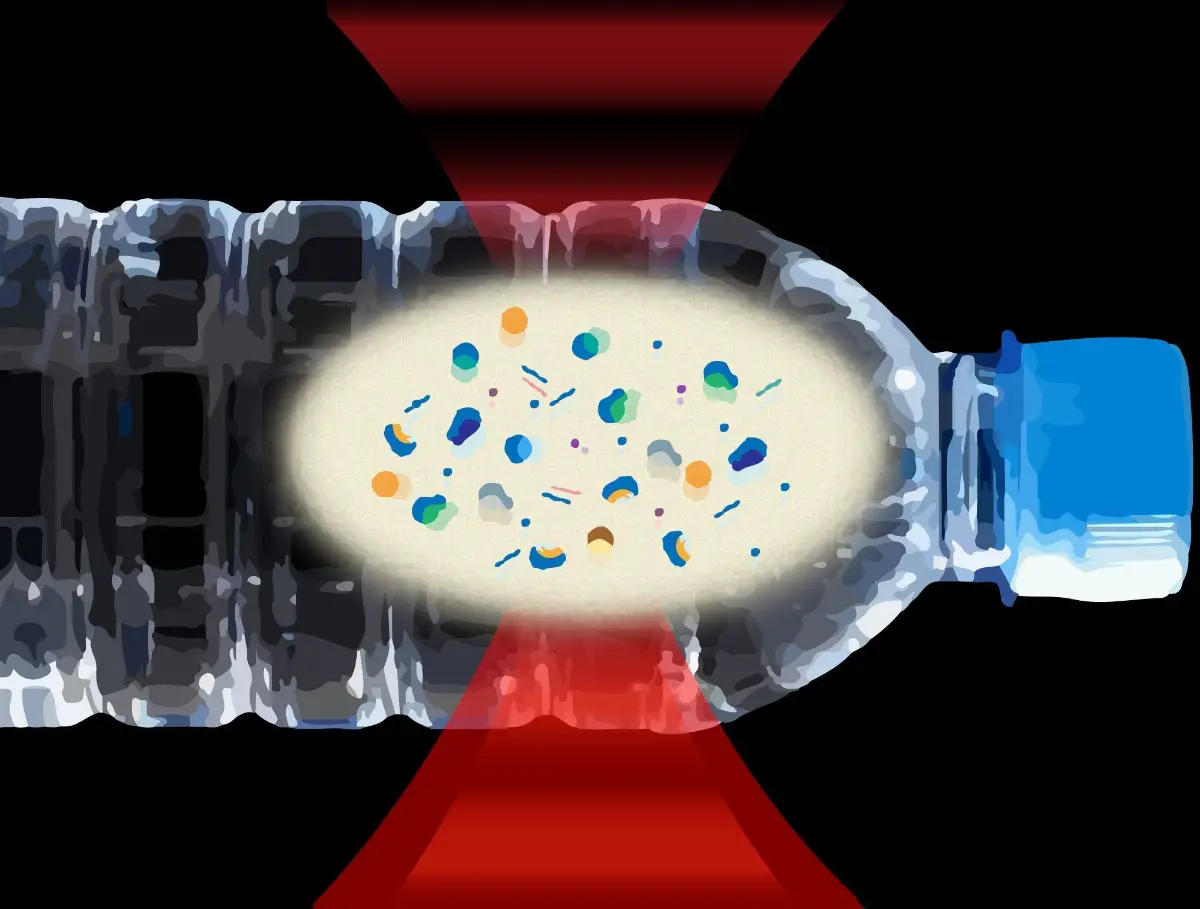
There is still too much plastic in the mineral water bottles
Columbia University: each packaging contains 240,000 nanoplastic fragments, enough for health risks

There’s still too much plastic in the mineral water bottles. This is attested by the surveys of the latest research conducted by scientists from Columbia University who have discovered that a liter of bottled water contains, on average, about 240,000 detectable plastic fragments: we are talking about a quantity ranging from 10 to 100 times more than previously estimated, a quantity that is still sufficient to involve health risks by infiltrating the organs and blood flow.
Scientists tested three brands of unreported US bottled water for 100 nanometer plastic particles: each liter contained 110,000 to 370,000 plastic fragments, 90% of which were nanoplastics and the rest microplastics.
Among the plastics identified by the study were polyethylene terephthalate (PET), commonly used in water bottles. The study suggests that PET may enter the water when bottles are crushed or exposed to heat, while cap manipulation contributes to particle release.
Finally, the study showed that the seven types of plastic sought represented only 10% of the nanoparticles present in their samples. The remaining 90% remained unidentified, leaving the possibility of tens of millions of unknown nanoplastics per liter.
According to the study polyamide, a type of nylon, exceeded PET in terms of prevalence: this was attributed to the plastic filters used in the water purification process before bottling. Researchers have also discovered other common plastics such as polystyrene, polyvinyl chloride and polymethylmethacrylate, which are used in various industrial processes.
Nanoplastics, scientists explain, are characterized by extremely small size and have the ability to bypass the intestine and lungs, allowing them to enter the bloodstream and subsequently reach organs such as the heart and brain. This tiny scale allows them to infiltrate individual cells and cross the placenta, with an impact on the body of unborn children.
The study used a technique called Raman diffusion microscopy, invented by Columbia biophysicist Wei Min: this method involves the use of two simultaneous lasers to resonate specific molecules. The researchers targeted seven common plastics and developed a data-driven algorithm to interpret the results.
Microplastics are fragments ranging from five millimeters to a micrometer, equivalent to a millionth of a meter: think that a human hair measures about 70 micrometers. Experts have not only identified the seven specific types of plastic, but have also documented their forms, offering potentially valuable insights into biomedical research.
"Previously, this was just a dark, unexplored area -explains the co-author of the study Beizhan Yan-. Toxicity studies were limited to hypothesizing what was in there. This opens a window that allows us to look into a world that we were not shown before".
EFA News - European Food Agency